
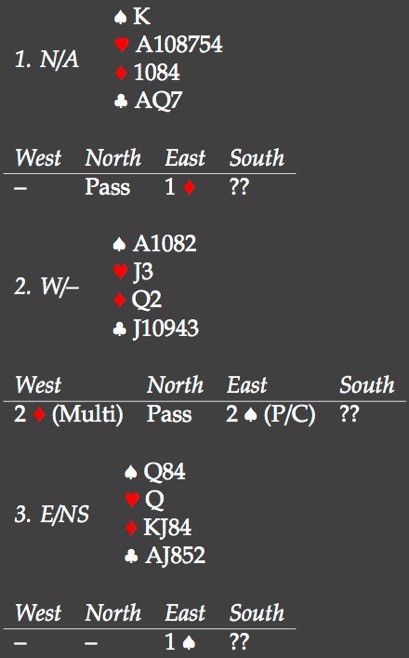 Last week, Piet Borst passed away. While Piet was an expert player in the 1970 and 1980’s, he was also known for making a good living playing rubber bridge against weaker but significantly richer opponents. I’ve always learned that I should be friendly to my opponents while taking their money, but Piet thought otherwise. One of his more famous quotes:
Last week, Piet Borst passed away. While Piet was an expert player in the 1970 and 1980’s, he was also known for making a good living playing rubber bridge against weaker but significantly richer opponents. I’ve always learned that I should be friendly to my opponents while taking their money, but Piet thought otherwise. One of his more famous quotes:
- Piet: Do you enjoy the game
- Opponent: Oh, yes, I love to play bridge!
- Piet: Why don’t you learn it then?
Back in the 1970’s, one could get away with that...
I had to think about that when playing a not-too-serious summer event last Friday. Let’s do this as a quiz. You pick up the 3 hands on the right, matchpoints, and it is up to you to bid something. Your call? Then guess what actually happened at the table.
Now a real problem. You have just finished 383 boards out of 384 of the 2013 Spingold, when you pick up this hand
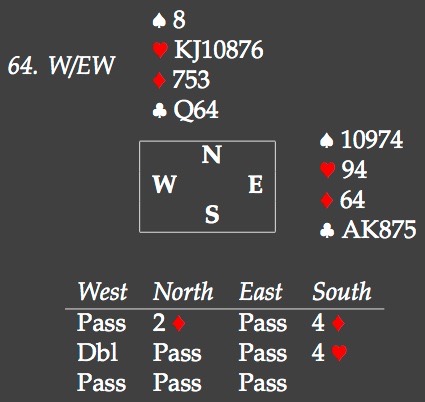 for the last board. The final you are playing is a tight match, you went into the last set with a 1 imp lead and it feels as if you have picked up a few. But it will be a close affair.
for the last board. The final you are playing is a tight match, you went into the last set with a 1 imp lead and it feels as if you have picked up a few. But it will be a close affair.
Not nervous yet? The hand is on vuegraph, with a couple of 100 people in the audience and 1000’s watching on the Internet. You pick up this hand. 2♦ showed a weak 2 in either major, 4♦ asked partner to bid his suit, double for the lead, and pass from north put the ball back in south’s court.
South now decided to declarer himself, redouble would have forced north to bid his major. South could have asked north to transfer to his suit initially, by bidding 4♣ instead of 4♦.
Partner leads the ♣J, covered by the ♣Q and you win the ♣K, declarer the ♣3. Now what? Play a second club or switch to the diamond partner asked for in the auction.
If you decide to cash the ♣A, you’ll see ♣9, ♣2 and small, and you can try again.
Back to the Friday problems. You are probably not going to believe this, but in all 3 cases, south made a take-out double. Not a huge success in either case.
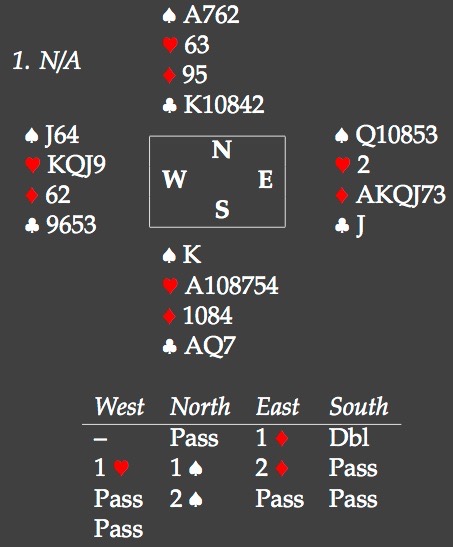
Board 1. As expected, partner expected some spade support in south and started to bid spades. While this caused EW to miss their 5-3 ♠-fit, NS ended up in a 4-1 fit. As EW cannot make game, though one NS pair managed to do so, down 4 in 2♠ didn’t yield many matchpoints.
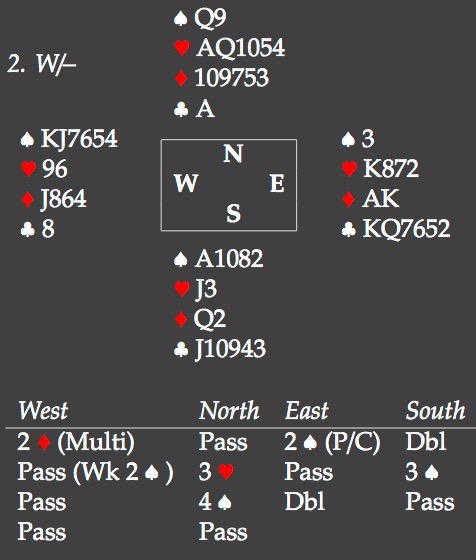
Board 2. It looked as south compensated his lack of high-cards by a lack of distribution. Partner took out the take-out double to 3♥, which would be an underbid for most partnerships but she must have seen partner’s doubles before. NS would have survived that, but south decided that he could not have partner play in a 5-2 fit at the 3 level. The result, a 4-2 fit at the 4 level. Down 6.
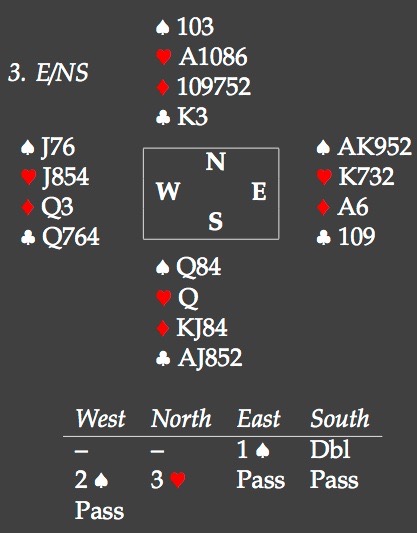
Board 3. Again, partner started to bid a suit, expecting some support, EW missed their 4-4 ♥-fit, but did take 8 tricks defending. +400 was much better than anything they could score themselves.
Some months ago, world champion Bas Drijver gave a seminar at the club and he offered some good advice about take-out doubles. A take-out double is a positive action, you bid it because you have something specific to show, namely: strength and support for the unbid suits. It is not a negative action, that is, you are forced to use it because you happen to have 13 cards and must bid in a forcing situation. Apply that to these 3 hands and disaster would have been avoided.
Back to the Spingold problem. At the table, east decided to cash the second club and had to decide if west had led from ♣J102 or ♣J2. After 5 minutes, he went for the former and switched to a diamond. Without the ruff, declarer could soon claim 10 tricks.
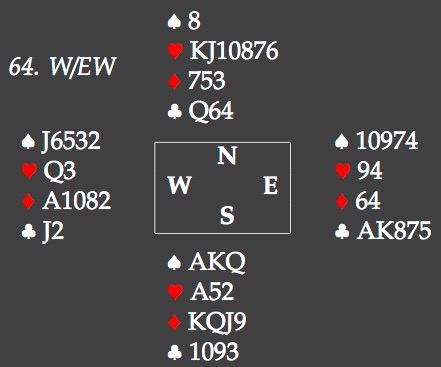 You were right about the score, going into this board, you were leading by 10 imp’s, this swing costs exactly 10 forcing the match to go into overtime. And to make matters worse, you lose the 8 board play-off for the title.
You were right about the score, going into this board, you were leading by 10 imp’s, this swing costs exactly 10 forcing the match to go into overtime. And to make matters worse, you lose the 8 board play-off for the title.
Could this have been avoided? There has been a lot of discussion on the hand but I think that the problem is in west’s double. Why? NS are likely to bid game with partner on lead. And, while the ♦A is a trick, it is no way clear that the ♦A has to be cashed at trick one to defeat the contract. Even when NS bid slam (north picks his major, south raises to 6 or similar), it is not clear that a diamond lead is necessary. This, of course, changes with stronger diamonds in west, say xx/xx/AQJxx/xxxx. But then south would have something like ♦Kx and he’d probably have tried to put the contract in his hand.
Now look at life without the double. North bids 4♥, east leads a fairly obvious ♣A, sees an even number of cards with partner, cashes the second club and gives partner a ruff. ♦A and down 1, for the title.
It is an interesting and tough problem, but I do think that the whole problem started when west started with a lead directing double when it was in no way clear that a diamond lead was necessary.
